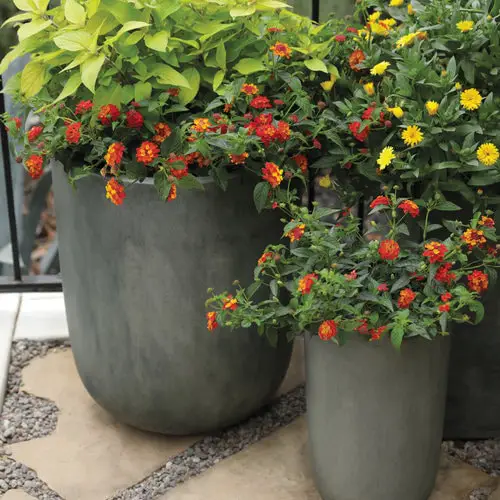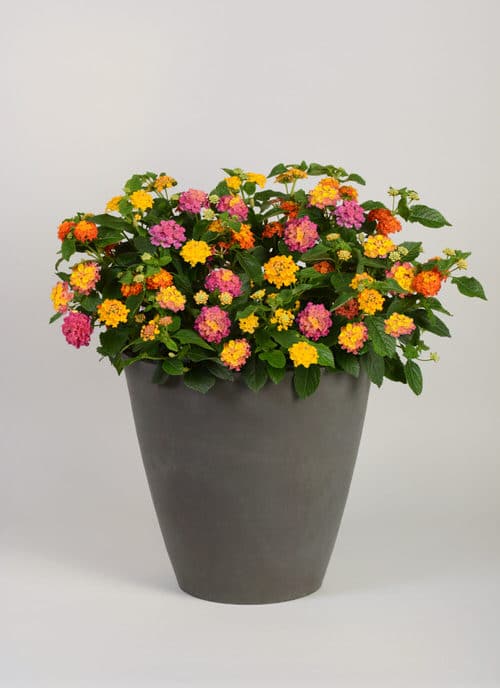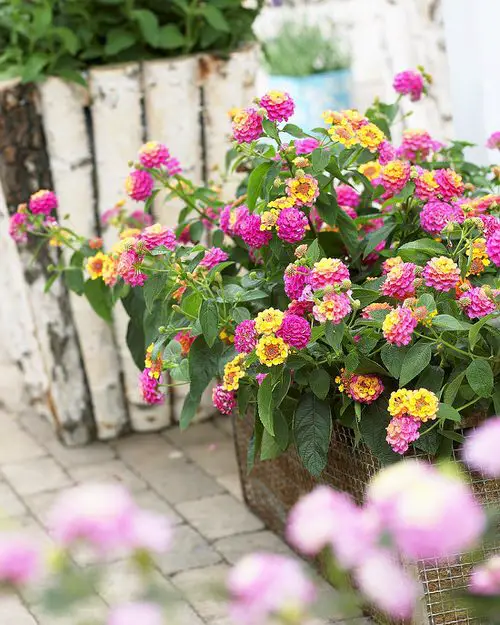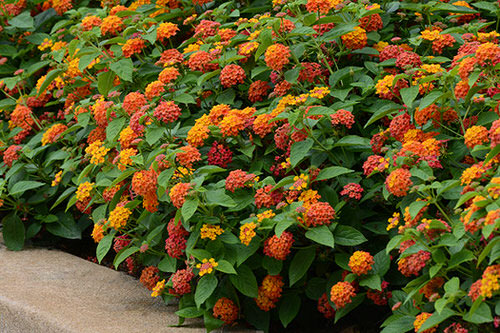Here’s everything you need to know about How to Grow Lantana and add its fragrant, colorful flowers to your garden that also attract bees and butterflies!

Popular for their clusters of colorful flowers, Lantanas are one of the best plants you can grow for a great display of colors. It also demands less attention and thrives all year round. Let’s have a look at How to Grow Lantana easily!
USDA Zones: 8 to11
Other names: Shrub verbenas, Viburnum lantana, Raimuniya, Unnichedi, Red sage, Wild sage, Yellow Sage and Ghaneri.
Here’s everything you need to know about growing Gerbera daisy
Best Lantanas You Can Grow
- Lantana involucrata: Popular as buttonsage, it looks ravishing with its white blooms.
- Lantana horrida: Quite a tough plant, it flowers in red, orange, yellow, purple hues.
- Lantana motevidensis: This trailing variety looks great as ground cover and in hanging baskets.
- Lantana camara: The most common and invasive variety, it grows quite rapidly.
- Lantana urticoides: Also known as Calico bush, it flowers from spring until the first frost.
Propagating Lantana
Growing the plant from seeds is a fairly easy process. However, it won’t grow if the seeds are from a hybrid variety. You can also propagate the plant from cuttings. Take 4-6 inches of cutting from a healthy plant, remove the lower leaves, dip the end in a rooting hormone, and plant it in a quality potting mix. Keep the soil moist and place the pot by a sunny window.
Plant lantana when the last forecast date of frost has passed, and slight warmness of spring arrives. Whereas, in the tropics, you can plant lantana in any season.
Growing Lantana in Pots

The key to growing Lantanas in pots is to make sure they get ample sunlight. You might have to take a little more care when it comes to watering as compared to garden-grown ones, and that’s only about it. It is very easy to grow and looks great on bright windows.
Requirements for Growing Lantana

Location
To have a healthy and profusely blooming lantana, you must carefully choose the area to cultivate it. Lantana needs full sun and dry location. A West or south-facing window will be an ideal location. In the tropics, you can grow lantana in partial shade too.
Watering
Lantana is a drought-tolerant once established. Water it only once a week by taking care not to wet the leaves or flowers. Let the soil dry out between the watering spells to prevent mold and mildew caused by overwatering.
In peak summer or when the plant is young, do regular watering.
Soil
Lantana is a very undemanding plant and thrives in most soil types. It prefers rich, well-draining soil with a slightly acidic to neutral pH level.
Lantana Plant Care

The key to growing lantana is neglecting it! Do not overfertilize and do economical watering. It is a low-maintenance plant.
Fertilizer
Lantanas thrive in all types of soil and, thus, do not require feeding to do well. If you want to boost the plant’s growth, fertilize it once every 2-3 months with a 20-20-20 feed. Do refer to the label for dosage and instructions.
Deadheading
Remove faded flowers from time to time. This will make sure that it is not diverting its energy to set fruits that contain seeds, which weakens the plant, shortening the flowering period.
Pruning
Prune the plant to promote dense growth flowers. Pinch new shoots off with your fingers to encourage more branches and lush growth. Also, cut off dead and long branches from time to time with a small pair of scissors.
Overwintering
Lantana is a tropical plant, and in colder climates, it does not overwinter on the ground but does in pots. Before the onset of winter, trim the plant 1/3 or even 1/2 and move it inside to a warm place at a temperature around 50 F (10 C).
Pests and Diseases
Lantana is resistant to most diseases, but it might be attacked by spider mites, mealybugs, and aphids, especially when grown in poor conditions.
Toxicity of Lantana Plants
Lantana leaves and berries contain toxic compounds called triterpenoids and can be lethal. Symptoms like constipation, diarrhea, mouth irritation, and abdominal pain might occur. It would be wise to keep the plant away from the reach of cats, dogs, and children.
Lantana as Ground Cover

As the plant is exceptionally fast-growing, hard to kill, and does quite well in full sun, all this makes it an exceptional ground cover specimen. It reaches 10-14 inches in height and looks great with its tiny flowers. However, it is best to grow them in raised beds to keep their growth and spread in check.



Thank you for the advise. I love Lantana and many other small dainty plants like babies breath, lavender and panzies.
Very helpful thank you!
I find the scent intoxicating like a bee would ;)
Hi, I want to plant these next to my house on the east side of the house. Kinda like a hedge. How far apart would I want to plant them? And is there a variety of them that is a perinnial? Thank you for the info
I planted my lantana in a huge pot and for awhile it was just gorgeous – then all of a sudden it started putting out seeds – still has some blooms but my question is should I remove the seeds or what. It has been so beautiful I would hate to lose it. After reading this I may have been over=watering it so will go easier on that. Could that be the reason for the seeds so early? Please help!